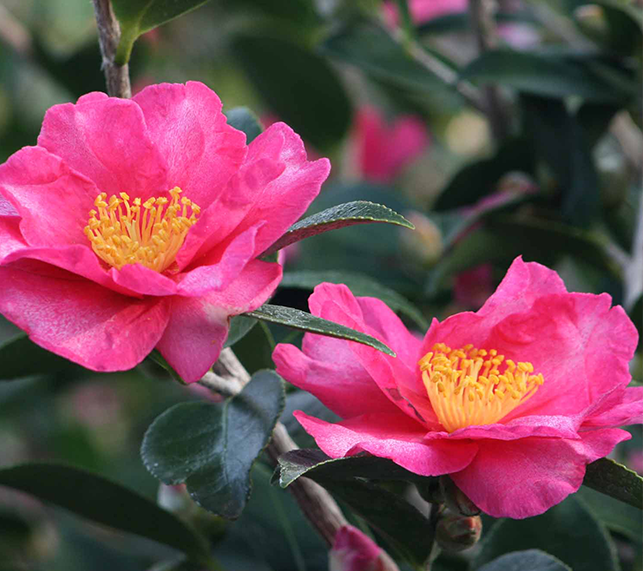
Growing Colorful Camellias
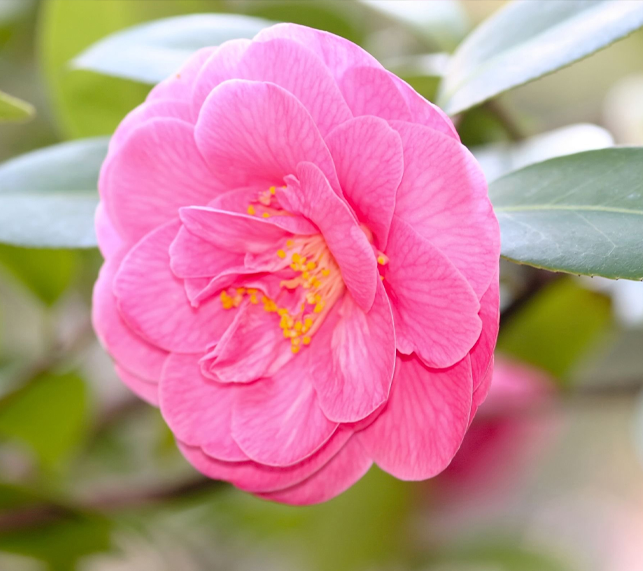
Learn to Grow Colorful Camellias
Camellias are a great evergreen ornamental shrub to add to your outdoor space. Known for their glossy, dark green foliage that contrasts nicely with big blossoms in white, pink, or red, that bloom from fall to mid-winter. In this guide, we'll explore the art of growing Camellias, from selecting the right variety to providing the care they need to thrive in your garden.
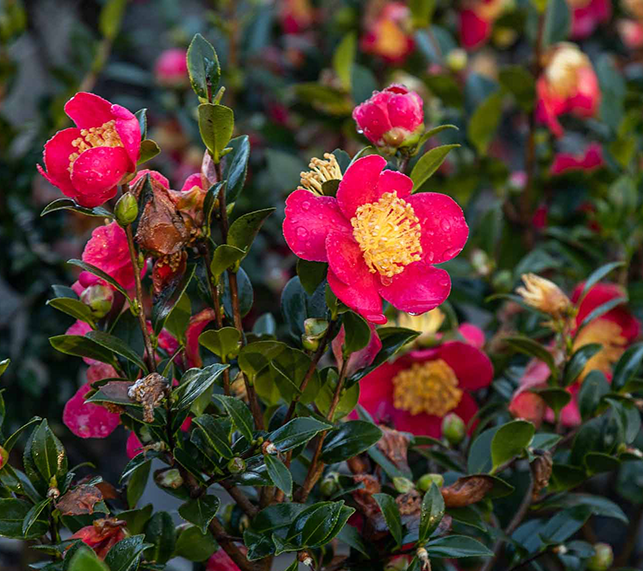
Why Choose Camellias
Elegant Blooms: Camellias are renowned for their striking, large, and often fragrant flowers. They come in a range of colors, from pure white to deep pink and even red, providing a dazzling display in your garden.
Year-Round Foliage: The glossy, dark green leaves of Camellias maintain their beauty throughout the year, providing a backdrop of lush greenery even when the plants are not in bloom.
Versatility: Camellias can be grown in various ways, such as shrubs, small trees, or even espaliers. The versatility makes them suitable for various garden styles and spaces.
Low Maintenance: While they require some care, Camellias are relatively low-maintenance plants, making them accessible to both novice and experienced gardeners.
Year-Round Foliage: The glossy, dark green leaves of Camellias maintain their beauty throughout the year, providing a backdrop of lush greenery even when the plants are not in bloom.
Versatility: Camellias can be grown in various ways, such as shrubs, small trees, or even espaliers. The versatility makes them suitable for various garden styles and spaces.
Low Maintenance: While they require some care, Camellias are relatively low-maintenance plants, making them accessible to both novice and experienced gardeners.
Understanding The Varieties
There are two species that are generally available: Camellia japonica and Camellia sasanqua. Both species are highly ornamental but differ in their hardiness, growth habits and flower types. Bloom season is one of the biggest differences between the two; sasanquas bloom in fall and early winter, and japonicas bloom late winter and spring.
Both japonicas and sasanquas work well in borders, hedges, and containers to provide off-season color. They also offer plant cover in shady areas and can be used as attractive accent pieces in the lawn.
Both japonicas and sasanquas work well in borders, hedges, and containers to provide off-season color. They also offer plant cover in shady areas and can be used as attractive accent pieces in the lawn.
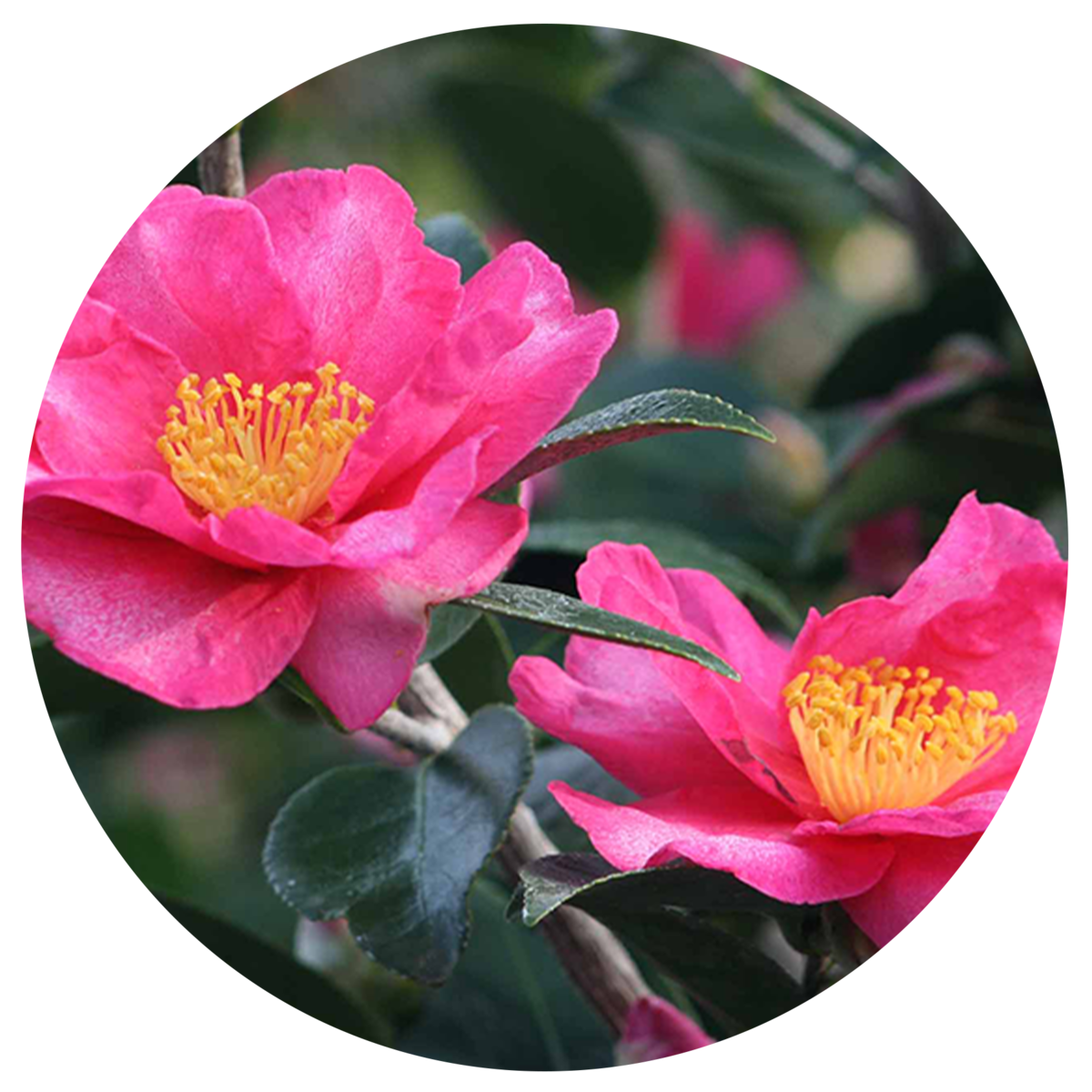
Camellia sasanqua
- Mature height ranges from 2-3′ up to 12 feet, depending on the variety
- Flowers are 2-4″ in diameter, with dark-green, shiny leaves about two inches long
- Flowers open in early winter and generally not fragrant
- Sensitive to long periods of subfreezing temperatures and do best in USDA zones 7 through 9
- Sasanqua varieties are ideal for the Dallas region
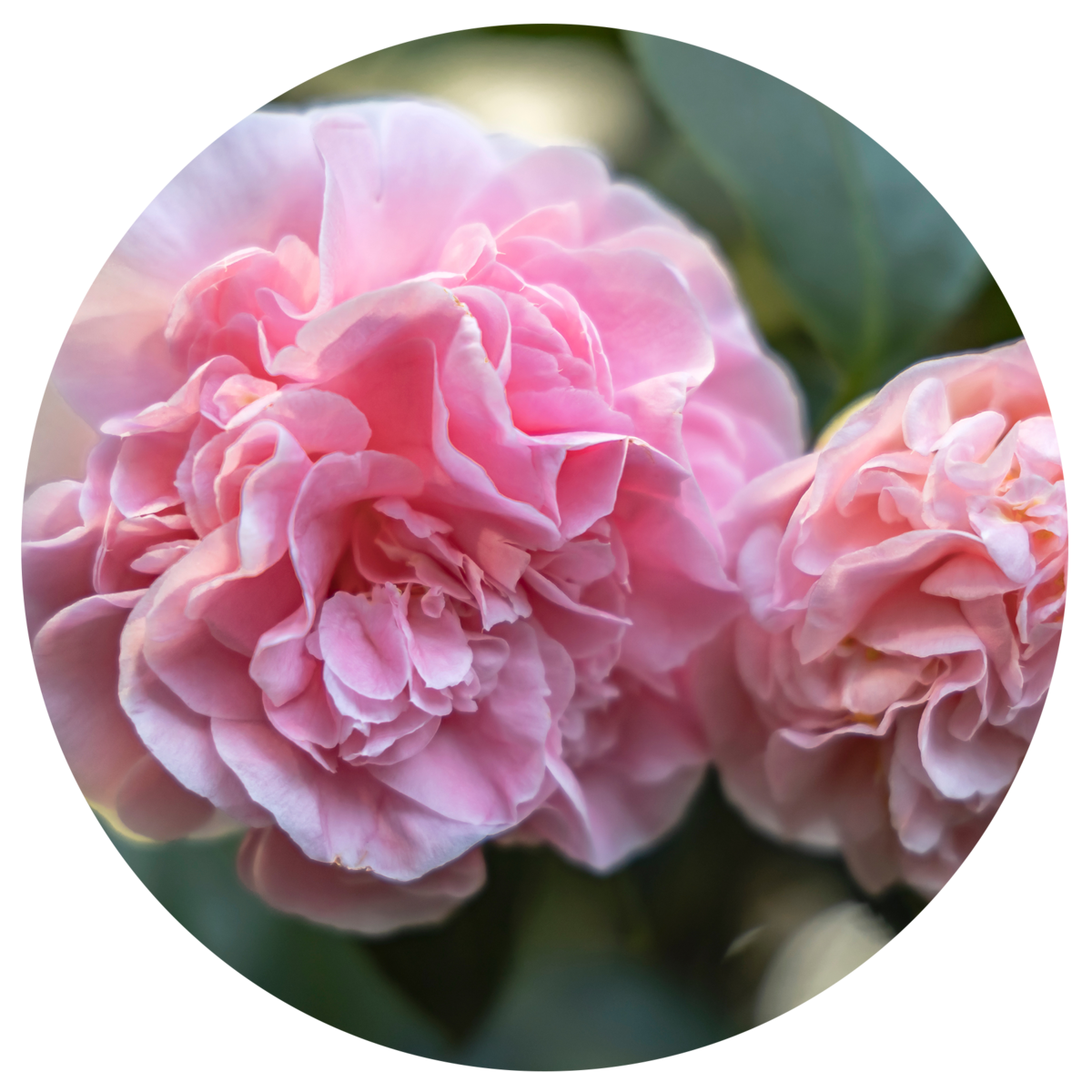
Camellia japonica
- Mature height ranges from 6′-12′, although they can reach a height of 25′
- Flowers can be as large as 5″ wide; partially or fully-doubled
- Flowers open in late winter, although timing can vary by variety. Available in many colors including white, pink, rose, red, and mixed red and pink; lightly fragrant.
- Japonicas and sasanquas are generally slow-growing, but japonicas are a bit slower than sasanquas
- A little more hardy than sasanqua and do well in USDA zones 8 through 10
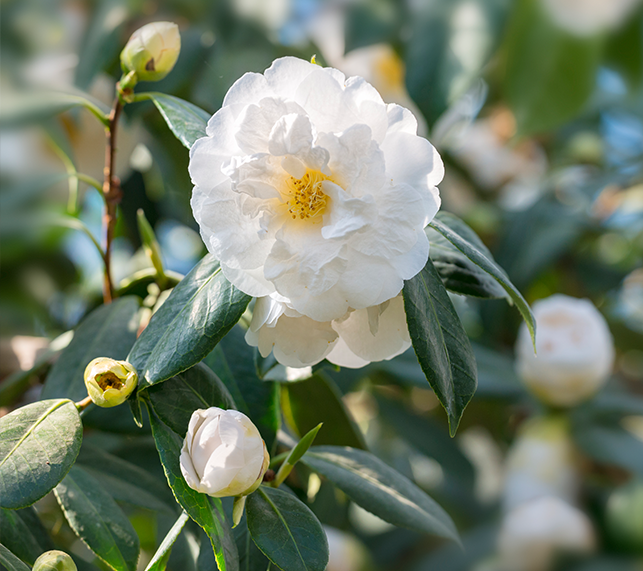
How To Care For Your Camellias
- Light: Both prefer partial sun for most of the day, but sasanquas can tolerate some full sun better than japonicas, provided they are well-watered
- Soil: They both need soil rich in organic matter; amend soil with compost at planting. They also prefer slightly acidic soil, with a pH of 5 or 6, and require regular moisture, especially before they are fully established. A two-to-three-inch layer of organic mulch conserves soil moisture and helps cool the roots. The Dallas Fort Worth soil is extremely compacted and alkaline, soil should be amended for camellias to survive.
- When to Plant: Both species of camellia can be planted any time of year that the soil is workable, as long as they are well-watered after planting. Camellias are shallow-rooted plants and should be planted at the same depth they were in their nursery pots. Give each plant good soil for new roots by digging a wide hole (only as deep as the rootball) and partially filling the hole with loose soil before planting.
- Pruning: Although pruning either type of camellia isn’t necessary, you may cut back as needed to control size; just remember to prune after blooming.
